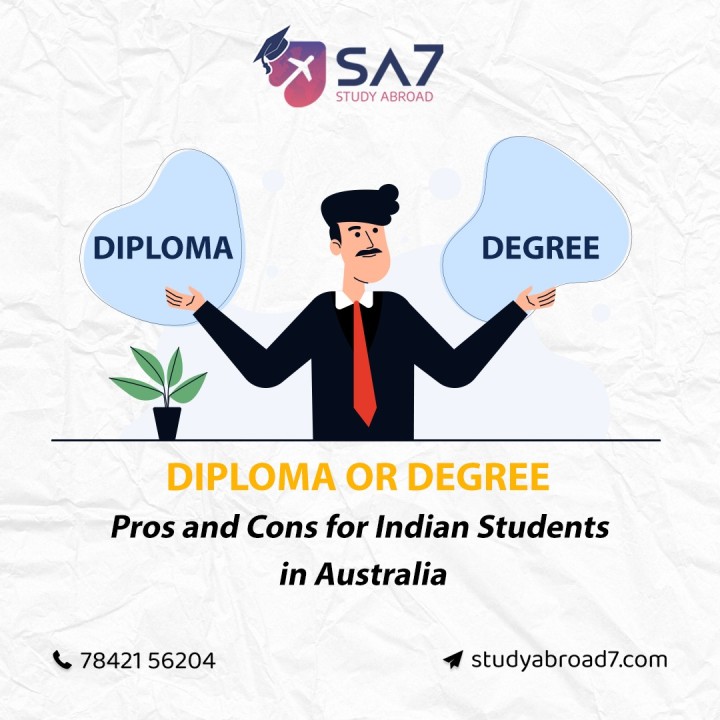
Australia is a popular destination for Indian students who want to pursue higher education abroad. Many students find themselves debating whether to opt for a diploma or a degree. In this blog, we will discuss the pros and cons of pursuing a diploma or a degree for Indian students in Australia.
Diploma:
Australian institutions offer a variety of diplomas that are tailored to meet the needs of Indian students. Some popular diploma courses include Business Management, Information Technology, Hospitality Management, Early Childhood Education, and Engineering. These diplomas offer practical skills training, work-integrated learning opportunities, and exposure to industry-relevant practices.
Pros:
Cons:
Degree:
Australia is a popular study destination among Indian students for pursuing postgraduate (PG) courses. Australian universities offer a wide range of PG courses across various disciplines, including engineering, business, computer science, healthcare, and more. The duration of PG courses in Australia typically ranges from 1-2 years, and the admission requirements vary depending on the university and the course. Indian students who wish to pursue PG courses in Australia must meet the English language proficiency requirements, such as IELTS or TOEFL scores, and have an undergraduate degree or equivalent qualification. Australia offers a welcoming and multicultural environment, excellent academic standards, and exciting career opportunities for international students.
Pros:
Cons:
In conclusion, both diplomas and degrees have their pros and cons for Indian students in Australia. It is essential to consider your career goals and financial situation before making a decision. Diplomas may be a better option for those looking for specialized skills training and a shorter duration of study, while degrees offer better job opportunities and visa eligibility. Ultimately, the choice between a diploma or a degree depends on individual preferences and circumstances.
Copyright © 2023 StudyAbroad7. All Rights Reserved.
